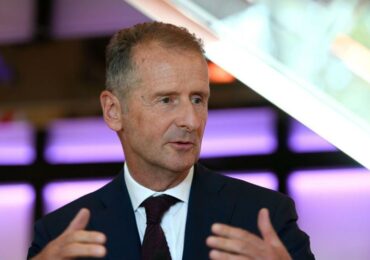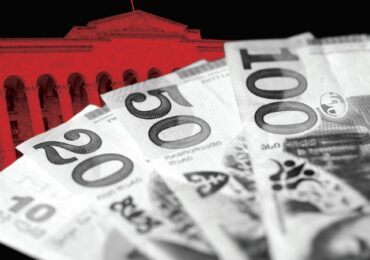Sweden’s economy dodged a contraction last quarter, providing the first glimpse of how its no-lockdown strategy of 2020 affected businesses and consumers throughout the year.
The gross domestic product grew 0.5% from the previous quarter, according to an indicator published by Statistics Sweden on Monday. Though the growth rate was only half that predicted by economists surveyed by Bloomberg, it was better than the Riksbank had expected and implies that GDP shrank less than 3% last year – a smaller decline than in the aftermath of the global financial crisis.
The report adds to evidence that Sweden’s export-heavy economy, the Nordic region’s largest, withstood the pandemic better than most European peers last year. But the country’s prospects remain uncertain, as Sweden braces for the next wave of coronavirus cases, including mutations that are proving much harder to stamp out.
With its earlier laissez-faire model resulting in many more Covid deaths than elsewhere in the Nordic region, Sweden has recently adjusted its strategy. Parliament last month passed a law allowing the government to impose lockdown-like measures should the need arise.
The fact that Sweden’s economy grew last quarter “will be of no comfort to Swedish households who are facing increased virus containment measures,” Melanie Debono, an economist at Capital Economics, said in a note. “We suspect that some of the fourth quarter expansion will be reversed in the first quarter.”
The krona eased 0.1% against the euro.
Monday’s report, which follows a string of positive surprises by large European economies, was far rosier than expectations at the Swedish central bank, which forecast a quarterly contraction of 1.2% and a decline of 5.3% from a year earlier.
What Bloomberg Economics Says…
“Sweden is facing new virus-related headwinds from a stronger position than most. We expect a renewed dip in the first quarter, but the hit from the second virus wave will be smaller than elsewhere and smaller than projected by the Riksbank.”
Sweden’s GDP growth follows strong earnings results from many of its biggest corporations. Telecoms equipment vendor Ericsson last week reported an 11% jump in sales of network products and services last quarter from a year earlier. Atlas Copco AB, the world’s largest compressor maker, saw orders growth that exceeded analysts’ estimates.
Still, Monday’s figures suggest Sweden faces a so-called K-shaped recovery, with the industrial sector progressing relatively well, while the service sector suffers from the pandemic.
“Our guess is that the negative impact from a second Covid wave on household consumption has been more severe than anticipated,” said Danske Bank’s chief economist Michael Grahn. “This figure entails a very distinct K-recovery pattern.”
With inflation remaining far from the central bank’s target, policymakers have in recent months highlighted the option of returning to negative interest rates. But as the GDP-reading was clearly stronger than the Riksbank’s projections it “reduces the probability for a rate cut,” Nordea economist Torbjorn Isaksson said in a note.
“At the next week’s monetary policy meeting, the Riksbank will most likely emphasize that the situation is still uncertain and that stimulus measures should not be scaled back too early.”












